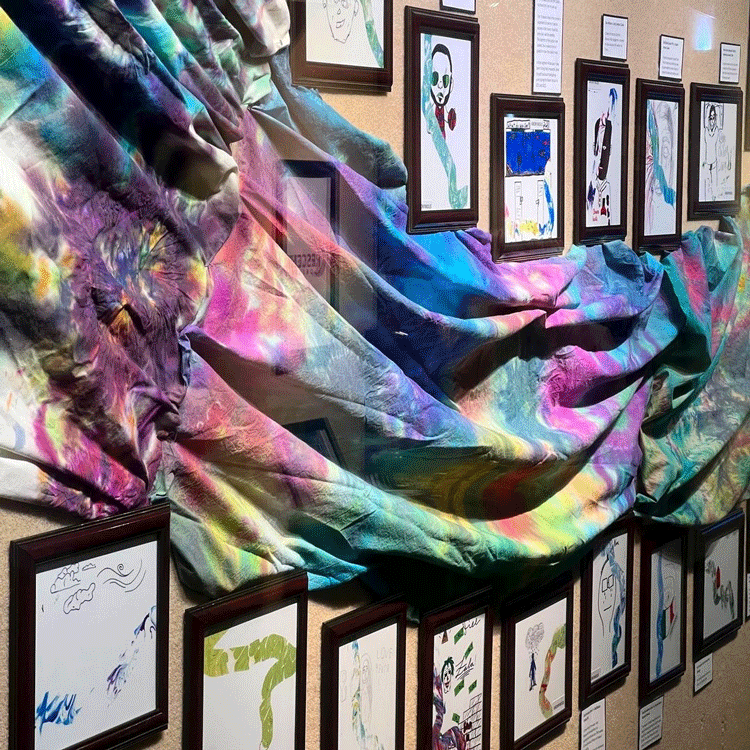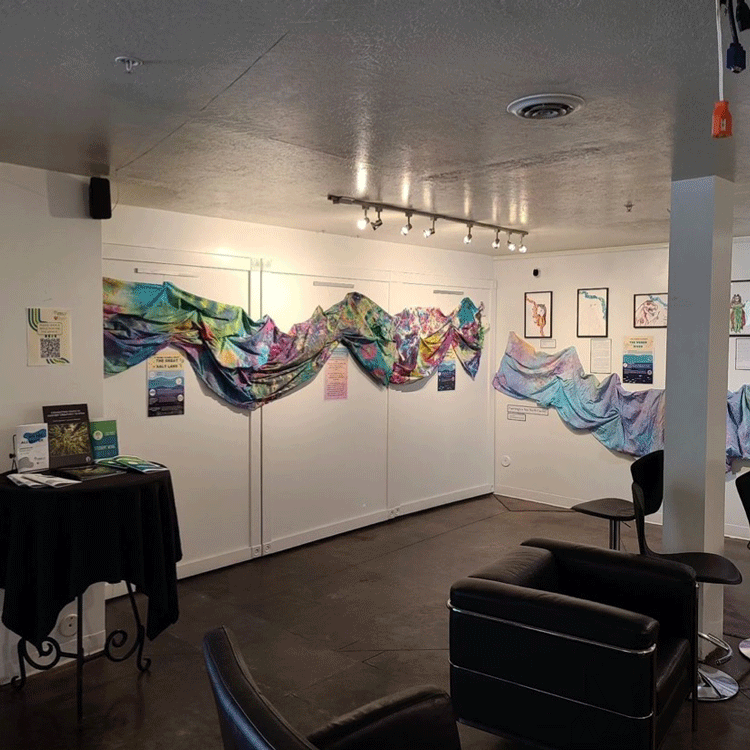Alumni Spotlight: Laura George

Laura earned her M.S in the Environmental Humanities in 2019. As a master’s student, Laura focused on reformation of youth environmental education, aiming to make it more inclusive to underserved populations as well as to those who don’t typically think of themselves as interested in or capable of participating in science through the inclusion of place-based interdisciplinary content. Laura currently works as the Associate Director for Initiative to Bring Science Programs to the Incarcerated (INSPIRE) and STEM Community Alliance Program (STEMCAP) for Youth-in-Care. These two programs bring local scientists to adult and juvenile incarcerated populations, respectively, to provide informal science education. Laura was drawn to these programs by their effort to engage underserved populations while expanding participants’ perception of science through interdisciplinary work and in-person contact with local scientists. She has been working on an exhibit called We Are All Water that was featured in The Salt Lake Tribune. Below are Laura's written responses to questions we sent her about her work and experience in the Environmental Humanities Program.
What does your work as Associate Director of STEM Community Alliance Program entail?
As the Associate Director of STEMCAP I oversee the development and implementation of STEM programming for Youth-In-Custody. STEMCAP works with volunteer presenters from the university as well as community partners to bring diverse STEM workshop experiences to incarcerated youth. The program also provides art and humanities programming. I develop and grow relationships with partners and work closely with administrators and teachers at the Youth-In-Custody centers and within the Utah State Board of Education, which provides STEMCAP’s funding.
This year, STEMCAP launched the We Are All Water exhibit. What is the focus of this exhibit, and what did the curating process entail?
The We Are All Water project focuses on water, identity, and community. Students learn about various water issues affecting their communities and the importance of the Great Salt Lake (GSL). The exhibit centers around the GSL and its tributaries. Students at each youth center learn about the river closest to their center and create dyed representations of the river. Using maps as stencils, students shape dyed paper into segments of the river and incorporate the segment into a self-portrait. Students reflect on the impacts that water and community have on their identity. The self-portraits can be linked together into a map of the river highlighting water as a shared and vital resources. I conceived of the project to help students reflect on the GSL and the environmental injustices that surround water use and pollution in our community. I wanted students to feel a part of their community and the artwork aims to remind the public that there are incarcerated students along the Wasatch Front who are thoughtful about our community’s challenges. The project also provides students an opportunity to portray themselves how they want to be seen, which is often different from the way that others portray them.

The We Are All Water exhibit just wrapped up at the Utah Cultural Celebration Center. What successes are you celebrating, and what’s next for the exhibit?
The exhibit at UCCC was a big success. We had over thirty people come to the reception and many more view the exhibit throughout its three months installation. Students were eager and excited to see videos of the public viewing their artwork. The exhibit is now up at Mestizo Coffee House for the month of July. The Mestizo exhibit will showcase portraits of about 65 students.

What was the focus of your research during your time in the Environmental Humanities Program?
When I was in the EH program, I focused on methods for increasing accessibility of environmental education through inclusion of art and writing workshops, a focus on local ecosystems including urban environments, and a plant-based curriculum. I researched benefits of multi-disciplinary educational programming, disparities in access to environmental education, and the role that art can play in teaching STEM and evaluating outcomes of educational programming.
How did EH set you up for success in your current job?
The EH program helped me foster strong communication skills, form connections with local community groups, and focus on issues of access within the STEM and environmental education fields. By working with community groups on the west side of the valley for my master’s project, I was able to become deeply familiar with some of the access and environmental justice issues right here in Salt Lake City. My master’s work focused on a place-based educational curriculum designed for Salt Lake City youth. Through this work I learned a lot about the Jordan River, the natural history of Salt Lake City and different microecosystems within the city. This knowledge helped me create the We Are All Water project and helps inform STEMCAP’s conservation work. My research on the benefits of cross-disciplinary educational programming has allowed me to expand STEMCAP’s Art-Science programming.
What are some fond memories from your time in EH?
When I was in EH, I had a really tight-knit cohort. We had a great time at the Taft-Nicholson Center for our Ecology in Residency course. I also enjoyed the field trip to Rio Mesa. Opportunities to discuss readings out in nature were wonderful. EH is a great community and the combination of scholarly and practical work and reflection is something that I think is unique to the program.
What advice do you have for current/future EH students?
Don’t be afraid to combine your interests and forge your own path. EH offers the flexibility to create projects that speak to multiple facets of your academic interest. Look for courses across campus that speak to you and don’t be afraid to take classes that are quite different from others in your cohort. EH is unique in its flexibility and a great chance to build out your knowledge and connections across campus and within the community.
Categories
Featured Posts
Tag Cloud
- community engagement (12)
- outdoor recreation (2)
- outreach (1)
- alumni (3)
- admissions (1)
- faculty (8)
- practitioner-in-residence (2)
- utah award in the environmental humanities (1)
- environmental justice (2)
- STEMCAP (2)
- STEM (2)
- water (1)
- communications (2)
- humanities (1)
- Taft-Nicholson Center (1)
- director (3)
- student (5)
- API (1)
- Asian American (1)
- Pacific Islander (1)
- graduation (1)
- research (3)
- thesis (1)
- project (1)
- Indigenous (1)
- Shoshone (1)
- Great Salt Lake (2)
- Bear River (1)
- land acknowledgement (1)
- STEMAP (1)
- public engagement (1)
- science (1)
- science communication (1)
- Wilkes Center (1)
- climate change (1)
- climate science (1)
- climate policy (1)
- policymaking (1)
- funding (1)
- storytelling (1)
- radio (1)
- journalism (1)
- racial justice (1)
- outdoor education (1)
- writing (1)
- non-fiction (1)
- energy extraction (1)
- queer (1)
- reading (1)
- environmental education (1)
- affect theory (1)
- media (1)
- rhetoric (1)
